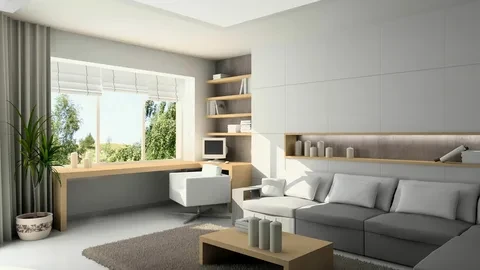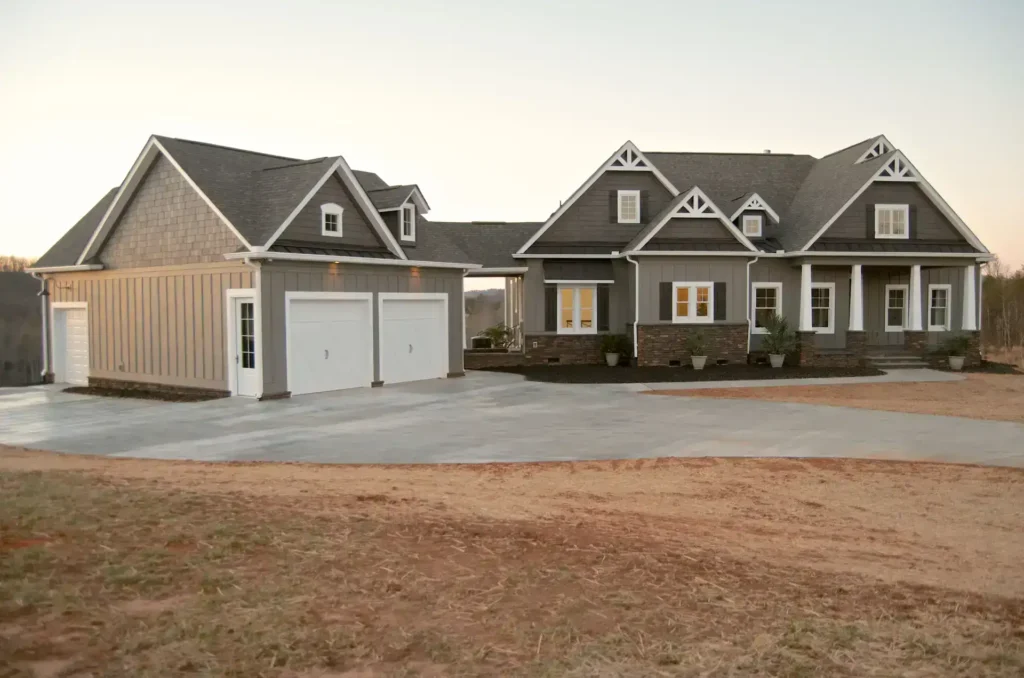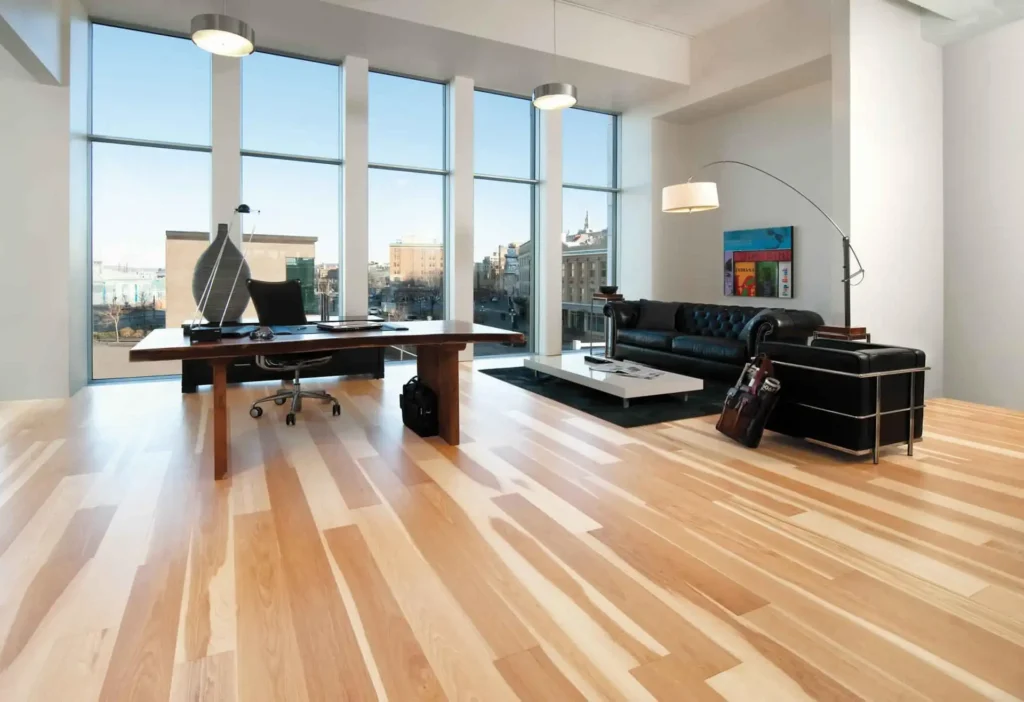When planning any construction or renovation project, it is important to understand the difference between interior and exterior. Interior and exterior are two different aspects of a building. The exterior includes the outside of the house, including walls, roofs, landscaping, etc. while the interior covers everything inside such as walls, ceiling, floor, furniture, etc.
We will explore the opposition between “Exterior vs Interior”. We’ll learn the elements included in the exterior and interior. It is also important to understand the cost factors of both to make an effective plan for your construction project.
Understanding Interior

The interior of a building refers to the inside of the house where people live, work, and rest. The interior work includes decorating the walls, rooms, ceilings, etc to look cozy and elegant. Interior design can also choose how a space would be used. The interior designer makes sure that rooms are set up in ways that make sense for daily activities. A well-designed interior not only looks great but also makes people feel comfortable at home.
Elements of Interior
The following are the elements that are included in designing the interior:
1. Walls and Paint
Walls are a big part of any interior. The color you choose for your walls can change the whole vibe of the building. Light colors make a room feel bigger and brighter, while darker shades add warmth and coziness. Some people add wallpaper or wall panels for texture and style.
2. Flooring
The type of flooring sets the foundation for the room. Common options include hardwood, carpet, tile, and vinyl. Different types of flooring are made for different types of rooms, such as hardwoods are good for rooms but tiles are good for the kitchen and bathroom because they clean easily.
3. Furniture
The selection of furniture is a major part of the interior. Sofas, chairs, tables, and beds are chosen based on the purpose and choice. The style, size, and color of furniture make the look of the building.
4. Lighting
Lighting is key to creating the right mood. Windows are installed where natural light is needed. While, different types of indoor lighting are also used such as ceiling lights, lamps, and wall lights. They make the building bright and lively.
5. Decor and Accessories
Decor items like rugs, curtains, art, and plants add personality and style. These accessories make a room feel complete and inviting. They can bring in color, pattern, and texture. It helps to reflect your taste and make the space feel like home.
6. Storage
Storage is important for keeping things organized and clutter-free. Cabinets, closets, and shelves help keep items out of sight while also adding to the room’s design. Good storage solutions can make a room feel more spacious and functional.
7. Layout and Flow
How you arrange furniture and design the interior layout affects how easy it is to move around and use the space. A good layout makes a room feel open, inviting, and practical.
Cost Breakdown
Following is a cost breakdown for designing the interior of a 2,00 sq ft house.
| COST FACTOR | AVERAGE COST per sq ft |
| Paint | $0.50 – $2.00 |
| Ceiling | $8 – $15 |
| Flooring | $10 – $30 |
| Furniture | $10,000 – $50,000 |
| Lighting | $2,000 – $5,000 |
| Decor | $1,000 – $10,000 |
| Cabinets | $100 – $300 per linear foot |
| Closets | $500 – $2,000 per closet |
| Storage | $500 – $2,000 |
Understanding Exterior

The exterior is the outside of a building which protects the house and defines the overall vibe. The exterior includes walls, a roof, a patio, and landscaping. The exterior of a building not only gives the look to the building but also protects it from harsh weather conditions, rain, and snow.
A well-maintained exterior can add value to a property, making it look inviting and well-kept. Plus, a sturdy exterior helps keep the building safe and energy-efficient by preventing drafts and leaks.
Elements of Exterior
The following are the elements that are included in designing the exterior:
1. Walls and Siding
The walls and siding cover the outside of a building. The walls are painted to enhance the look. The siding is made strong and sturdy to protect the building from harsh weather. Common materials include brick, wood, vinyl siding, and stucco. Each material has its own features and benefits and is chosen on the basis of use.
2. Roof
The roof is one of the most important parts of the exterior. It protects the indoors from the rain, sun, and snow. Roof materials, like shingles, metal, and tiles, are chosen based on climate and style. A good roof lasts many years and adds value to the building.
3. Windows
Windows are used where natural light is needed. They also play a role in insulation. They help to keep the indoors warm in winter and cool in summer.
4. Doors
Doors are not only for entry and exit but also add to the building’s look. The front door, especially, makes a statement and can set the tone for the entire property. Doors are available in materials like wood, metal, or fiberglass. Each offers different levels of security and durability.
5. Landscaping
Landscaping adds to the looks of the building. Landscaping includes plants, trees, flowers, and even pathways around the building. It makes the outdoor space useful for relaxing and enjoying quality time.
6. Gutters and Drainage
Gutters and drainage systems move water away from the building. They protect the foundation and walls from water damage. Proper drainage is essential to prevent issues like leaks and erosion.
7. Outdoor Lighting
Outdoor lighting is used to brighten walkways, entryways, and landscaping at night. It adds security by lighting up dark areas and makes the building look inviting.
Cost Breakdown
| COST FACTOR | AVERAGE COST per sq ft |
| Walls | $3 – $30 |
| Siding | $3 – $20 |
| Roof | $3 – $20 |
| Paint | $1-$2 |
| Windows | $100-$500 per window |
| Doors | $300-$1000 per door |
| Landscape | $5,000 – $20,000 |
| Gutters | $1,000 – $3,000 |
| Lighting | $1,000 – $5,000 |
Exterior vs Interior – Conclusion
Exterior and Interior of a building serve different purposes but work together to create a complete, comfortable space. The exterior focuses on protection and durability. While the interior is all about comfort, style, and functionality.
While the outside materials are chosen for strength and weather resistance, the inside elements are picked to make daily living easier and more enjoyable. Both require regular care to stay in good shape and look their best. Understanding these differences helps you make smart choices for any building project.


